Matisse® C Compact Ultra-Narrow Linewidth Tunable Ring Lasers
Overview
The Spectra-Physics® Matisse® C is a fully automated and compact single frequency tunable ring laser that is ideal for Quantum and AMO (atomic, molecular and optical physics) applications. The Matisse C system has the industry’s highest output power, the narrowest external linewidth, and the broadest mode-hop-free tuning range. The compact, sealed, and fully automated design with broadband mirrors and specially developed optical mounts provide long term stability and worry free operation.
- Highest output power available >7.2 W
- Narrowest linewidth <20 kHz rms
- Compact, sealed, fully automated design
- Hands free operation
- Broad tuning range (>400 nm) with one optics set
- Widest mode-hop-free piezo tuning >50 GHz
Products
Applications
- High-resolution Spectroscopy
- Quantum Physics
- Atom cooling and magneto-optic trapping
- Atomic clocks
- Bose-Einstein condensates
- Frequency combs
- Quantum computing
- Microcavity resonators
- Quantum applications
Specifications
General Characteristics1
| Matisse CR | Matisse CS | Matisse CX | |
|---|---|---|---|
| Linewidth (100 msec) | <1 MHz rms | <50 kHz rms2 | <30 kHz rms2 |
| Linewidth (100 µsec)3 | <100 kHz rms | <35 kHz rms | <20 kHz rms |
| Beam Diameter4 | 0.8-1.0 mm (typical) | ||
| Beam Divergence | <1.2 mrad (half angle) | ||
| Amplitude Noise | <0.1% rms (above pump noise, added in quadrature) | ||
| Scan Range | >50 GHz (at 780 nm) | ||
| Optics Tuning Range5,6,7 | |||
| Matisse BBE-OPT8 | 668-1068 nm | ||
| Matisse BB-OPT | 700-1000 nm | ||
| MOS-1 Optics Set | 680-780 nm | ||
| MOS-2-BB Optics Set | 730-930 nm | ||
| MOS-3 Optics Set | 860-1020 nm | ||
| MOS-1-EXT | 668-700 nm | ||
| MOS-3-EXT | 1000-1068 nm | ||
Output Power (780 nm) Matisse CR and CS
| Millennia eV 25 W | Millennia eV 20 W | Millennia eV 15 W | Millennia eV 10 W | Millennia eV 5 W | |
|---|---|---|---|---|---|
| MOS-1, MOS-2-BB Optics | 7.2 W | 5.5 W | 3.8 W | 2.0 W | 0.8 W |
| Matisse BB-OPT Broadband Optics | 6.5 W | 4.7 W | 3.5 W | 1.8 W | 0.7 W |
Output Power (780 nm) Matisse CX
| Millennia eV 25 W | Millennia eV 20 W | Millennia eV 15 W | Millennia eV 10 W | |
|---|---|---|---|---|
| MOS-1, MOS-2-BB Optics | 6.2 W | 4.7 W | 3.3 W | 1.7 W |
| Matisse BB-OPT Broadband Optics | 5.3 W | 4.0 W | 3.0 W | 1.5 W |
Millennia Pump Laser and Lab Requirements
| Pump Laser Polarization | Horizontal |
| Pump Laser Power | 5-25 W |
| Ambient Conditions | ±0.5°C in the 20-30°C range, non-condensing humidity conditions |
| Cooling | Water required to remove 20 W of heat from crystal; series connection from Millennia chiller recommended; 16-21°C ±0.1°C suggested |
| Laboratory | Vibrational isolated optical table, dust-free air (flow box) |
| Electrical | 100-250 VAC, max 2.5 A |
| Computer Control | XP/Vista/Windows7/Windows8/Windows10/USB Port |
Footnotes:
- Due to our continuous product improvement, all specifications are subject to change without notice.
- Linewidth relative to built-in reference cavity.
- Extrapolated.
- At Matisse C output port.
- Specification applies to Millennia eV 15 W, 20 W, and 25 W pump lasers. Please inquire for other pump lasers.
- Special optics available for custom tuning ranges.
- Matisse CX version has a reduced tuning range.
- Matisse BBE-OPT must be ordered with Matisse BB-OPT.
Features
Fully Automated
The Matisse C is fully automated for truly hands free operation. The laser is controlled with an intuitive GUI for quick and easy wavelength selection, piezo scanning, and frequency locking. It is housed in a compact closed box with no external adjustment knobs. An automated alignment optimization routine utilizes picomotors to seamlessly optimize the system for peak performance. Broadband coated mirrors enable hands-free tuning across 668–1068 nm, eliminating the need to manually change optics sets.
High Power and Broad Tuning
Broadband optics provides unprecedented 668–1068 nm automated continuous tuning. Coupled with the Millennia® eV™ 25 pump laser, the Matisse C produces >7.2 W of output power. The Matisse C provides more than 400 nm of tuning with automated optics set switching and linewidths down to 20 kHz, with fully integrated PDH lock to X reference cell.
Frequency Stabilization
Matisse CR
A unique phase lock loop technique provides <100 kHz linewidth with passive frequency stabilization. The Matisse CR can be readily upgraded to the higher resolution Matisse CS.
Matisse CS
The Matisse CS actively-stabilized Ti:Sapphire ring laser utilizes a reference cavity and offers a spectral linewidth of <35 kHz.
Matisse CX
The Matisse CX provides spectral linewidths below 20 kHz. This ultra-narrow linewidth is achieved by use of an intra-cavity electro-optic modulator (EOM) and the Pound-Drever-Hall stabilization scheme with a high finesse external reference cavity.
Narrowest Linewidth
Noise contributions to linewidth occur on different timescales: seconds correspond to thermal drifts, tens to hundreds of milliseconds correspond to acoustic noise and vibrations, and microseconds correspond to electrical noise. Linewidth measurements for the Matisse C are provided for 100 milliseconds and 100 microsecond intervals. The 100 millisecond measurement fully accounts for electrical and vibrational noise contributions and showcases the exceptional engineering of the Matisse laser platform.
Mode-Hop-Free Tuning
Superior mechanical stability, specially designed optical mounts, unique tuning methods, and the preferred Out of Plane cavity design of the Matisse C all contribute to the exceptional mode-hop-free scanning range of >50 GHz. In order to take this to the next level, we have developed Scan Stitching for wide mode-hop-free tuning over the full wavelength range (up to 400 nm.) The fully automated Scan Stitching function is easily activated through the Matisse C GUI.
Dynamic Scan Range
The Matisse is featured with a Dynamic Scan Range function for easy adjustment of the wavelength tuning resolution. This is achieved via a built in switchable piezo amplifier with easy software control. Tuning resolutions down to 50 kHz can be selected when fine wavelength adjustments are needed.
Variable Low Frequency Locking
CW single frequency ring lasers utilize a Phase Lock Loop (PLL) in order to stabilize the laser cavity to a single longitudinal mode. The Matisse C incorporates a unique PLL technique that delivers low dither frequencies (down to 500 Hz) to minimize laser noise and allows easy adjustability of the frequency (500 Hz – 3 kHz) via software.
Compatible Power Sensors
To verify and analyze the output power of your Matisse C laser, we recommend the Ophir 7Z07128 thermal power sensor and Centauri laser power meter. Additional information on this laser measurement equipment can be found on the ophiropt.com website. Other Ophir sensors and meters may also be suitable for the Matisse C, depending on application. Ophir also works with laser system developers to achieve embedded beam diagnostics to monitor system performance as an OEM solution.
Resources
Data Sheets
- Matisse C Datasheet.pdf (822.9 kB, PDF)
Literature
- CW Tunable Lasers Brochure (3.8 MB, PDF)
- Ultrafast Lasers Brochure (4.6 MB, PDF)
- Advancing Photonics-Based Quantum Technologies Research (7.3 MB, PDF)

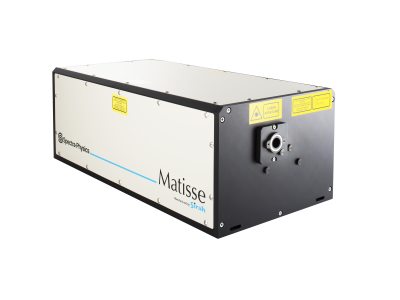
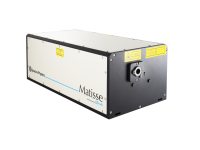
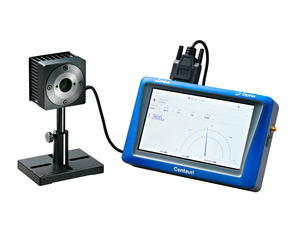
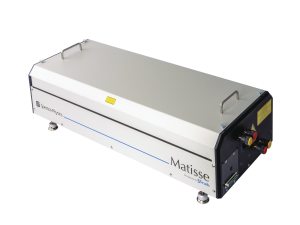
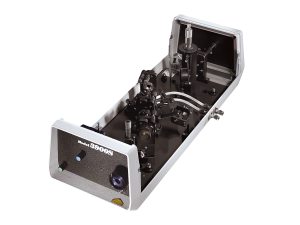
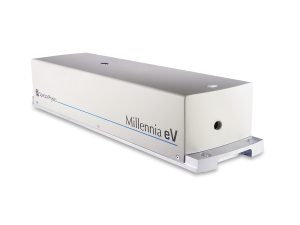
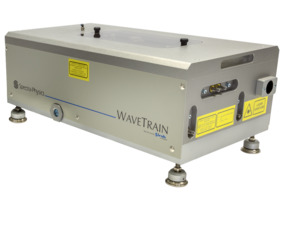
 Ultra-High Velocity
Ultra-High Velocity